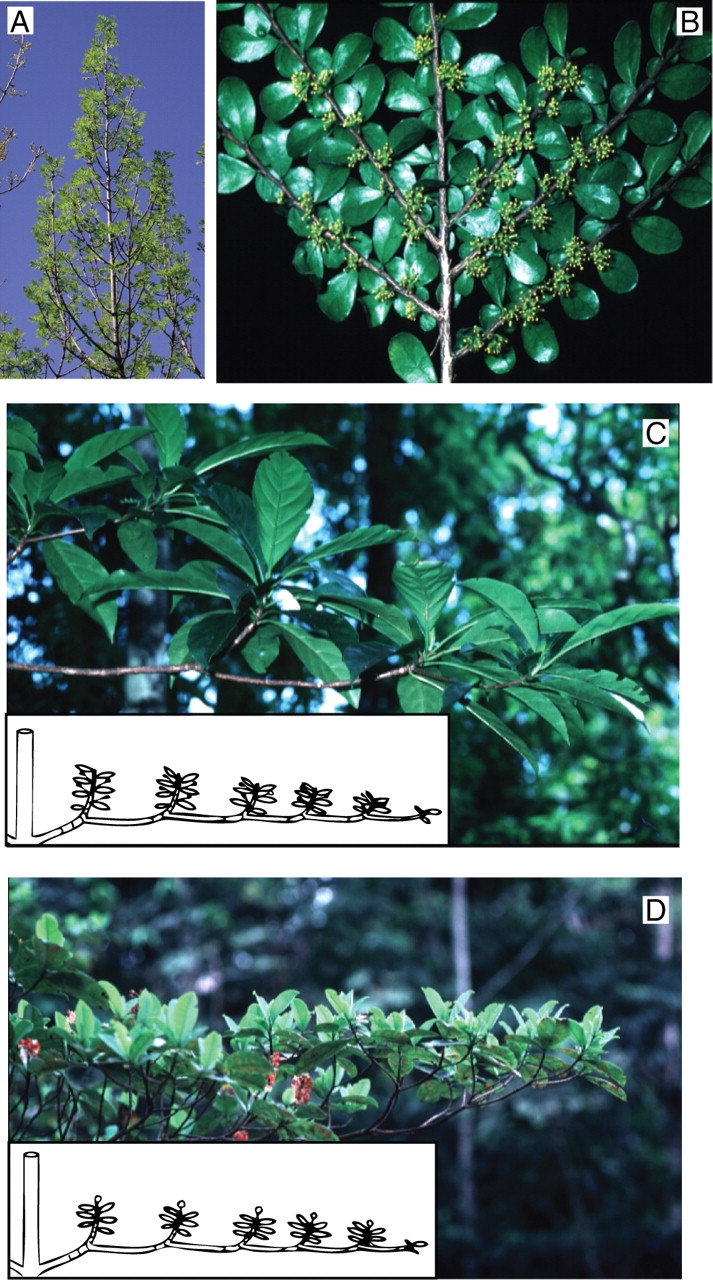Fig. 14.

Orthotropic axes are generally erect to vertical with a radial symmetry, bear large leaves and long lateral axes (Fraxinus oxyphylla, A). By contrast, horizontal axes tend to exhibit a bilateral symmetry frequently associated with a high reproductive and photosynthetic strategy: they represent plagiotropic axes (Azara microphylla, B). Particular kinds of plagiotropic axes correspond to an immediate hypotonic sympodial branching system of successive indeterminate (plagiotropy by apposition: unidentified Sapotaceae, C) or determinate (plagiotropy by substitution: Byrsonima densa, D) sympodial units.
